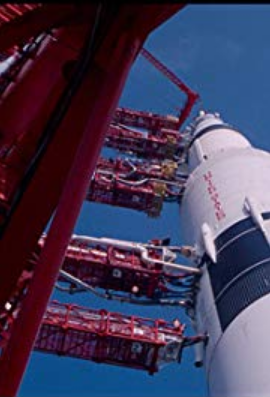Apollo 11 (Todd Douglas Miller, USA): 2019
Reviewed by Larry Gleeson at the 2019 Sundance Film Festival.

Off to an early start with an 8:30 A.M. screening of Todd Douglas Miller’s (Dinosaur 13) Apollo 11, a Neon Production and CNN Film, this morning at the 2019 Sundance Film Festival’s MARC Theatre. And, I wasn’t disappointed. Miller and his team gained access to the National Archives and Records Administration as well as the NASA archives for their project and I was happy to see another space film after covering Rory Kennedy’s Above and Beyond: NASA’s Journey To Tomorrow this past summer at AFI DOCS in Washington D.C.
Crafted from a newly discovered trove of 65mm footage, and more than 11,000 hours of uncatalogued audio recordings, Miller takes us straight to the heart of NASA’s most celebrated mission with masterful editing and grand storytelling – the one that first put men on the moon, and forever made Neil Armstrong and Buzz Aldrin into household names.
Immersed in the perspectives of the astronauts, the team in Mission Control, and the millions of spectators on the ground, Apollo 11 provided the audience with a look from inside the Apollo 11 spacecraft, the jocular banter of the astronauts as well as the adoring crowds and the tense atmospherics inside Mission Control. Miller delivers a vivid experience of those momentous days and hours in 1969 when humankind took a giant leap into the future fulfilling President Kennedy’s May, 1961 mission of sending a man to the moon utilizing still black and white, and color photographs, newsreel voice-overs and the stunning cinematography treasures captured during the 1969 mission.
With never seen-before footage and a run time of ninety minutes, the film covers nine days in an efficient manner. Miller, a self-described space geek, weaves a warm, emotionally fulfilling narrative with a strong sound design from Matt Morton and riveting music from Eric Milano highlighted with moments from the preparation, liftoff, landing, return and recovery of the famed mission.
But, he could not have managed it without the expert skills of Stephen Slater, a specialist in the NASA film archive, and nominee for the Arthur C Clarke Award for Achievement in Space Media, who had the dubious distinction of syncing the audio for all the soundless archival footage (as none of the footage had any sound!), and Ben Feist, a software engineer at NASA, and the Apollo program historian behind the interactive website Apollo17.org, a web experience that recreates the last mission to the Moon in real time, who created algorithms to streamline the massive audio files. Lastly, all the 16mm and 35mm archival footage was scanned and converted into a large screen format, 4K, utilizing a one-of-a-kind, prototype scanner.
In the Q & A following the screening, Miller playfully referred to Apollo 11 as the ‘Dunkirk in space’ and provided insightful background on how these stored film reels came into being as the failed attempt of MGM and NASA to produce a film together. Miller confessed to always wanting to make a big screen film. Apollo 11 is in the U.S. Documentary Competition and seems to be one of the audience favorites so far.
This is a must-see film. Hopefully, it’s sooner than later as rumors of a highly anticipated announcement of its distribution in IMAX format is imminent here at Sundance.
About this entry
You’re currently reading “Apollo 11 (Todd Douglas Miller, USA): 2019,” an entry on Student Film Reviews
- Published:
- 01.25.19 / 6pm
- Category:
- Films, Sundance Film Festival
No comments
Jump to comment form | comments rss [?]